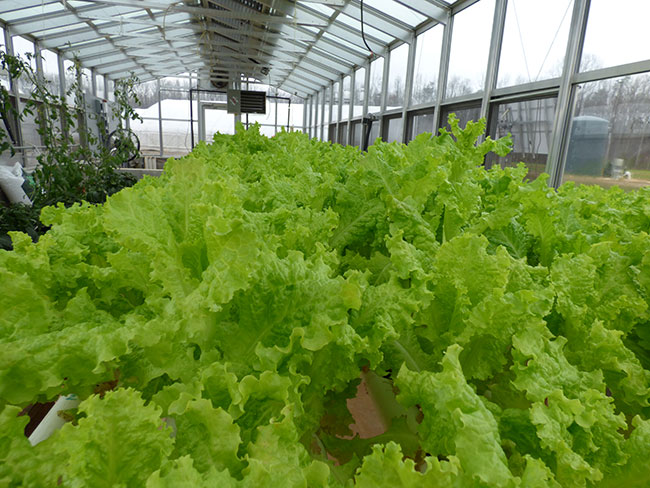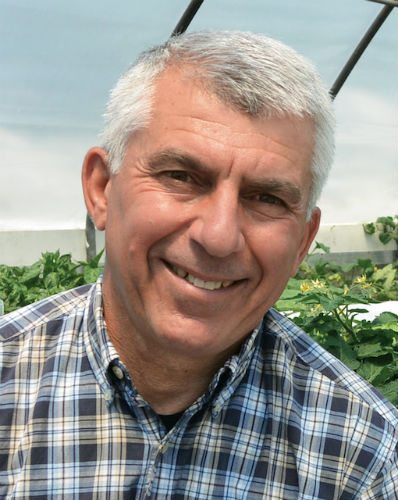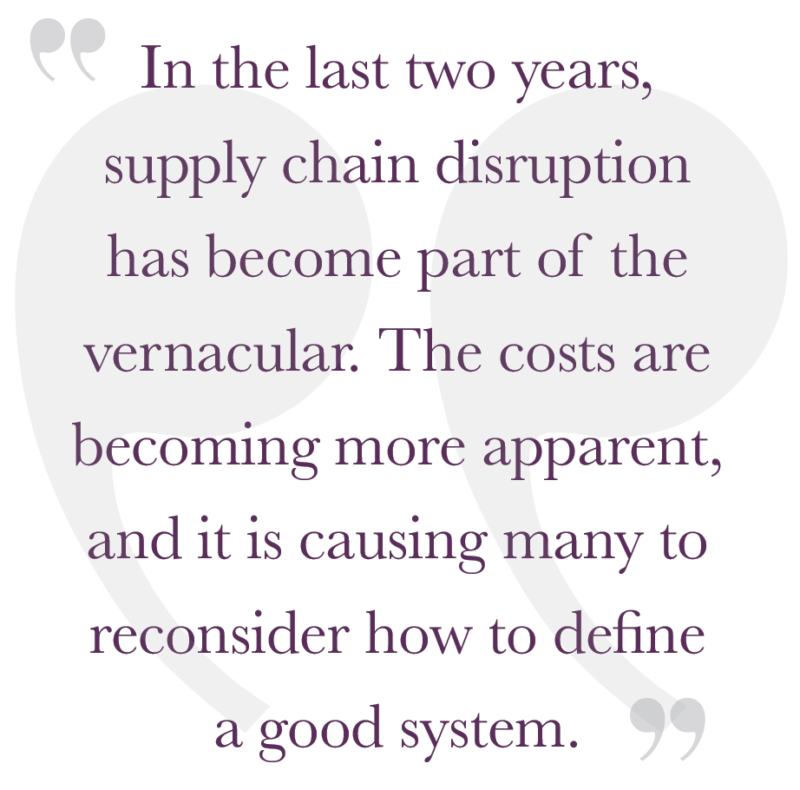
Agriculture’s Economics: Are Consumers Always Happiest in Low Price Markets?
My guest today is Michelle Klieger, founder and president of Stratagerm Consulting, an agricultural consulting firm serving the global seed industry. She has worked with indoor and vertical growers on their seed selection processes. Michelle earned her bachelor’s degree from the University of Maryland in 2008 in Animal Science, her master’s degree in Agricultural Economics from Purdue University in 2015 and an MBA from Indiana University’s Kelley School of Business in 2015.

Peter: Michelle, you’re my first returning guest; welcome back. Yikes, two years flew by since our first Duets article. Back in 2020, COVID was just settling in — and who would have predicted we’d still be talking about pandemic-caused supply chain disruption two years later.
During this time, you and I have teamed up to produce a podcast called The Gate (The Grower and The Economist). I’m the grower, you’re the economist, and we recently posted our 50th episode together. What an exciting experience it is to focus our message on helping small- and medium-sized farms, greenhouse operations, and indoor vertical farm facilities navigate production and economic challenges. With our third year under way, what has caught your attention as an economist?

Michelle: Producing crops is a difficult business, and success requires more than a green thumb. You need to be a great grower and a great businessperson, and prepared to act as the technology, markets and situations evolve. You and I are experts in our specific niches and we have academic and industry guests that share their expertise, but the growers need to understand all these aspects and more. It’s an incredible amount of knowledge and the risks are incredibly high.
Peter: That’s an astute observation that growers need to be dialed in at many levels to be successful. One such level is financial fluency. The present state of economics makes Controlled Environment Agriculture (CEA) — specifically indoor vertical farming — capital-intense, economically risky and beyond the reach of most farmers and growers.
Are one or more factors likely to change the economics of CEA in the future? Global population continues to rise resulting in more mouths to feed. Simultaneously, less land is available to farm sustainably putting more stress on our food system. Stated differently, what factors must change for CEA to accelerate its rate of growth as a significant contributor in our food production system?
Michelle: There are models of successful CEA agricultural production. High-tech greenhouses in Mexico, Arizona, Canada and other locations produce great products year-round. They are economically viable and, as you mentioned, are capital intensive with high operating costs. These operations are the case to beat, and I am confident that economic improvements will come.
The benefits of CEA are fewer pests and inputs because the environment is controlled. Growing food closer to population centers provides fresher food with lower transportation costs. Plus, the ability to recycle water is huge. The problem is that the infrastructure is expensive so only the fastest-growing crops with high profit margins are viable. Leafy greens alone will not make us food secure.
Peter: You and I share an observation in this discussion. There are many factors to unpack, evaluate and understand as we imagine how our food system needs to evolve in order to deliver secure food to every citizen needing to be nourished.
You mentioned water use efficiency that CEA offers. This topic alone is receiving excellent research attention, but also needs much more political will from local to national to international platforms. You recently shared with me that the Arizona-based dairy industry, a major hub of our dairy production, is under stress because the water demand of the alfalfa that needs to be grown near the cows is exceeding what is allotted for this use from the Colorado River basin.
There is literally a war being waged over the river’s precious water between population centers and farmers. With western droughts occurring more frequently and population in the region rising, it’s only going to get worse in the coming years. Am I answering my own question here, Michelle? Is water an economic factor that is destined to change the economics of food production enough to make CEA more profitable? Is this a factor that will allow more small farmers to operate profitably in our locally grown food movement?
Michelle: If climate change and higher input costs continue to push agricultural prices up, then yes, CEA prices might look better in comparison. Given the recent water challenges, it is possible for governments to enact policies that limit field agriculture which could benefit CEA. For example, in 2016, Saudi Arabia banned water used in forage crop cultivation to reduce water consumption.
Instead of a stick, however, governments could provide the industry with incentives to expand CEA operations directly or by making them more profitable with research investments to lower costs and increase output through technological and agronomic improvements.
Peter: This conversation leads me to a Darwinian conclusion, that survival demands fitness. Change is constant; adaptation is a requirement. I’ve walked this path with many fellow growers. Take the history of floriculture as a recent example. My generation’s parents made a decent living with small greenhouse and garden center operations. Today, most of these operations are gone, replaced by big box retail outlets.
Small operations that evolved sufficiently are still operating. Others, however, were not able to keep pace. My family operation buckled under the pressure of supporting four households with our 55,000 square foot greenhouse range. Many other industries have experienced this phenomenon. A generation ago there were corner mom and pop grocery stores, butcher shops and hardware stores. It’s called progress, and after experiencing it in my own business and witnessing it in others, I often ask myself, is progress always good?
Michelle: In the last 40 years, we have focused on efficiency, or the lowest price. Producers with the lowest costs were rewarded by selling more. Trade and communications improved, giving the most efficient producers access to more customers, leading to consolidation and the closing of the small, less efficient stores you mentioned. This system drove down costs and assumed that consumer happiness depends on paying the lowest price possible and across sectors (especially food and clothing), we pay less than ever before.
The cost of lower prices and consolidation is fewer options, limited in-store expertise, fewer workers, and the risk of empty shelves. Many people overlooked the costs because lower prices were so appealing. In the last two years, supply chain disruption has become part of the vernacular. The costs are becoming more apparent, and it is causing many to reconsider how to define a good system. Will the definition include environmental impacts, how workers are treated, the local economic impact or what the brand stands for? Plus, via social media, businesses and brands can talk directly to consumers about their product, giving consumers more power to define “good.”

Peter: Thank you for that; as a consumer my default mode is to find the lowest price, but more and more I find myself incorporating other factors into my purchase decisions, as you mentioned. You’re probably tired of hearing me ask, Why do our food and flowers have to be so cheap that small growers can’t make a decent living growing them?
I have another question for you that’s rooted in something I learned decades ago in an undergraduate agriculture course. My professor presented a directive from a source I’ve since forgotten. Nevertheless, it has remained front of mind for me since the day he presented it: Eat less of the cow and more of what the cow eats.
Recently I tried KFC’s new Beyond Fried Chicken tenders. I’m going to try Burger King’s Impossible Whopper next. The KFC meatless chicken product wasn’t bad at all, after getting past the over-the-top spiciness (I’m not a garlic and onion guy). I think the directive from that course years ago is finally playing itself out in front of my eyes.
There’s a ton of money being thrown at the alternative meat industry. If we move toward fewer animals, that will result in more crops for human consumption. I’m anxious to see if future food production challenges make the economics of locally grown food more attractive. Will it play out that it’s less about one system serving all, but rather a diverse assemblage of complementary systems to feed the world?
Michelle: That’s to be determined, Peter. Centralized production with trade is the most efficient or cheapest system. As centralized production grew, it got bigger, invested more, and kept becoming more and more efficient. The small or regional food systems that could not compete on price shrank.
Today, small-scale infrastructure is gone and innovation has stalled. These cycles exacerbated the differences between the two systems. Regions are beginning to invest in feeding themselves, which is reigniting innovation and improving competitiveness. Some consumers and government agencies are showing a preference for locally produced food, which is also driving regional food systems. CEA is also expanding what is possible regionally.
Most regions cannot and should not produce everything themselves. However, as the pendulum shifts away from efficiency, I see room for multiple food systems that complement each other.
Peter: I hope you don’t tire of fielding that question from me. I am laser focused on painting a more promising picture of how agriculture and horticulture need to evolve in the future. Helping small farmers and growers grasp the changes they need to make in order to have a seat at the CEA table is a crucial part of agriculture’s next evolutionary step.


 Video Library
Video Library 




















